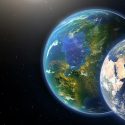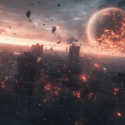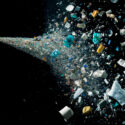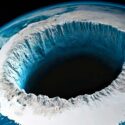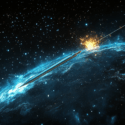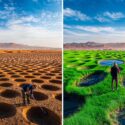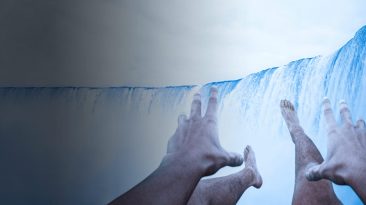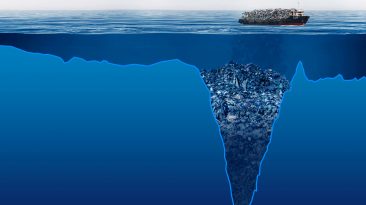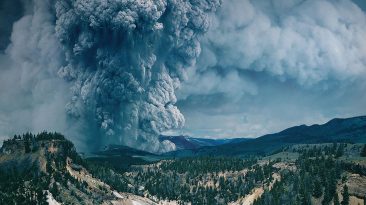If you were going for a refreshing swim, the last thing you’d expect is to suffocate from toxic gases. But when it comes to Lake Kivu, this is one dangerous body of water you wouldn’t want to dive into.
What makes this lake so hazardous? What would be the physical consequences of swimming in it? And how could the lake be on the verge of a toxic explosion?
Lake Kivu is on the border of the Democratic Republic of Congo and Rwanda. It covers 2,700 sq km (1,042 sq mi) and is one of the African Great Lakes. But it has a dangerous twist. It contains about 55 billion cubic m (1.9 trillion cubic ft) of methane and carbon dioxide.
The lake sits on top of active volcanic hot springs. So these gases accumulate in the deepest layers of the lake at a depth of around 300 m (984 ft). Usually, these gases would bubble out. But because they’re so deep under the lake waters, they are under high pressure. That makes them denser than the layers of water above. And the gases can’t rise to the surface.
But what if this fragile system shattered and the toxic gas suddenly went to the surface? And what if you happened to fall into Lake Kivu at that moment?
If you fell into Lake Kivu, the first thing you’d notice is how warm it is. At the surface, the water temperature is around 24 °C (75.2 °F). If you were to dive deeper, you’d be in for a surprise. Typically, the water in a lake gets colder the deeper you go.
This process is known as convection. Cold, dense surface water sinks, while warm less dense water rises. But in Lake Kivu, it’s the opposite. You’d feel the temperature rising as you go down. You’d also notice that the water divides into two sections. There is the low-density water above 60 m (200 ft) and the dense saline-heavy lower level.
These two layers hardly mix. The lower levels have been sitting near the bottom, untouched for thousands of years.
It’s this bottom layer of the lake that might kill you. The gases stored in the deep lake water could suddenly release, creating a toxic gas cloud. This is a limnic eruption.
Eruptions like this have devastating effects. But they are rare, with only two in recorded history. The most disastrous one was at Lake Nyos in Cameroon in 1986.
A large, toxic cloud of carbon dioxide suddenly spread to nearby villages and asphyxiated 1,800 people. But if this happened at Lake Kivu, it would be even worse. Lake Kivu is larger than Nyos. The death rate of an eruption here would be extremely high. And, of course, you’d be at the center of it.
The water would be saturated with gases. The additional gas would bubble out and mix with the atmosphere. The soil would be dry. A drought would indicate that something terrifying was brewing inside Lake Kivu. The water would start to evaporate. The pressure at the bottom would decrease, and the lake would release more gases.
Things would get even worse if there were an earthquake. It would happen with little warning and wreak havoc in numerous ways. It would shake the layers of the water like a can of soda. And when that can opens, it would release carbon dioxide. And the bad news wouldn’t end there.
There would also be methane bubbling out of the lake. As the methane mixed with the surrounding air, it could ignite, setting the lake on fire. But you’d likely already be unconscious from all that carbon dioxide. Your heart rate would increase. And if by some slim chance you were conscious, you’d experience extreme headaches and dizziness.
Finding yourself swimming in an exploding Lake Kivu wouldn’t end well. You’d be looking at anything from carbon dioxide poisoning to getting crisped from methane-infused fire. So get out of that lake as soon as you can. And if you brought some portable oxygen with you, start breathing it.
Sources
- ” GNF – Lake Kivu, Democratic Republic Of The Congo And Rwanda “. Weis, Almut. 2021. Globalnature.Org.
- “The African Lake With Explosive Power”. Wenz, John. 2021. Bbc.Com.
- “Rising Global Temperatures Are Creating Bubbling, Methane Lakes You Can Light On Fire”. 2021. Business Insider.
- “Limnic Eruption”. 2011. Design For Disaster – Aid, Victims, Information, Communication, Knowledge, Experiences, Ideas, Projects.



